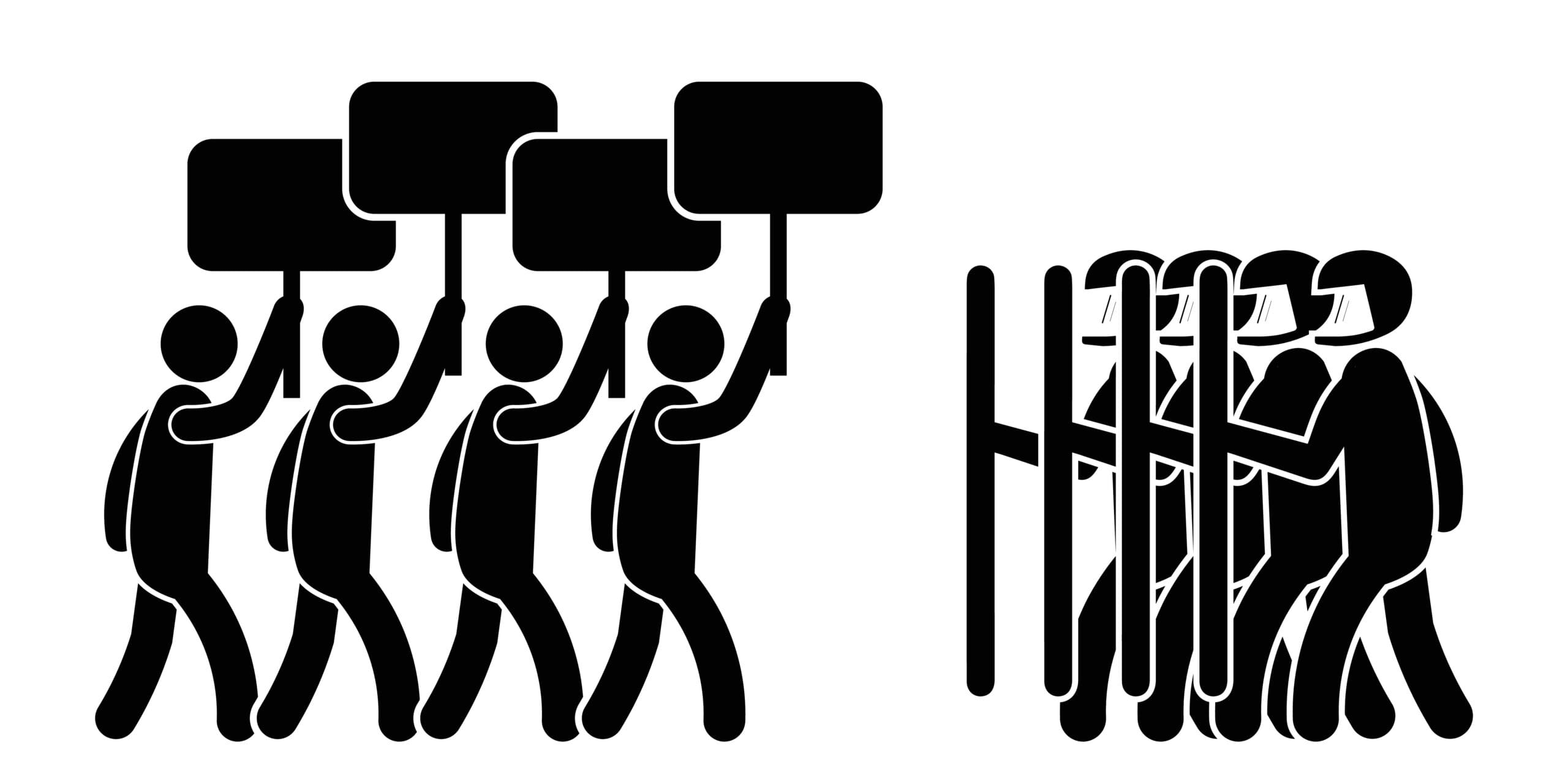
Just like in an active shooter situation, university emergency managers are increasingly asked to take a more active response role in just about all disasters, including protests, demonstrations, riot and other civil disturbances.
Published: May 1, 2024 Author: Andy Altizer and Captain Timothy Murphy
Editor’s Note: This article was originally published in 2021 but is particularly appropriate right now with so many pro-Palestine protests currently taking place on college campuses.
University emergency managers must continue to have an all-hazards approach, with collaboration and teamwork the hallmark of a successful mitigation strategy. It seems as though most large-to-medium-sized universities have emergency management departments. One could argue that since the Virginia Tech tragedy in 2006, university emergency management has evolved from an additional responsibility to a full-fledged and very active department on most campuses.
The four phases of emergency management – mitigation, preparedness, response and recovery – serve as the backbone of the department, again with an all-hazard approach. Over the past 18 months, COVID-19 proved that emergency managers in higher education must prepare for just about anything. Not unlike their municipal counterparts in emergency management, preparing for the most likely disasters tends to take up the majority of the time, but the less thought of, and more catastrophic events, should never be forgotten.
If nothing else, the all-hazard approach provides a starting point to tackle just about all emergencies. Emergency managers have learned the importance of building capacity with a variety of resources that can be used in the response and recovery phases for a multitude of scenarios.
——Article Continues Below——
Threat and intelligence-led events must always be at the forefront of all preparations, which has been a critical aspect of university emergency management over the past 18 months regarding civil unrest. Universities must be prepared when protests turn into riots with the potential for property damage and violence. Campus police may also be called upon to support other universities or neighboring municipal jurisdictions, and university emergency managers must be prepared to support such an operation as well.
Undoubtedly even before the November 2020 elections and threats of protests across the nation, university emergency management staff had a plan that involved many aspects of the university structure, including the cabinet, police, student affairs and public relations. Like many other potential disasters, emergency management often took a supporting role, and in the case of civil unrest, to the campus police.
It is important to point out, or at least remind everyone, that emergency managers are not first responders. In fact, emergency managers’ response role on a university campus differs quite dramatically depending on the organization, and often, within the emergency management staff itself. The understanding with all university emergency managers (unless they are sworn police) includes that they will:
What exactly must university emergency managers be prepared to do in the response phase of civil unrest?
Again, each campus may use their emergency management staff a little differently in responding to civil unrest, and some may be asked to:
University emergency managers must be trained in any response role they take on or assume. Just like in an active shooter situation, university emergency managers are increasingly asked to take a more active response role in just about all disasters, including civil unrest. Emergency managers must be trained and have the proper equipment.
Besides some very specific roles outlined earlier, emergency managers often provide information to campus leaders, and on-scene situational awareness provides accurate and timely details. Responding emergency managers also provide a completely different perspective to the civil unrest incident than their police counterparts who are on the frontlines, and at times, engulfed in highly stressful activities.
Although emergency managers must focus on the emergency management response, it is important during the preparation phase for them to also train with the first responders. Emergency managers not in sync with campus police will find themselves on the outside looking in, and then when called upon, not have the resources needed to support the operation. Some campus police operations still tend to request support by simply calling dispatch. Calling directly to the emergency manager, or at least the emergency operations center during a civil unrest operation, will expedite support, which will undoubtedly enhance the safety and security priority of the overall operation.
Preparation, including exercises focusing on civil unrest, remains a core function of the emergency management function, but emergency managers response role seems to grow with each threat and actual disaster. The other phases (mitigation, preparedness and recovery) of emergency management will continue to be the most time-consuming part of the day-to-day functions, but responding to emergencies seems to be an increasing responsibility on campus.
Andy Altizer is director of emergency management at Kennesaw State University, and Captain Timothy Murphy is special operations commander at Kennesaw State University.